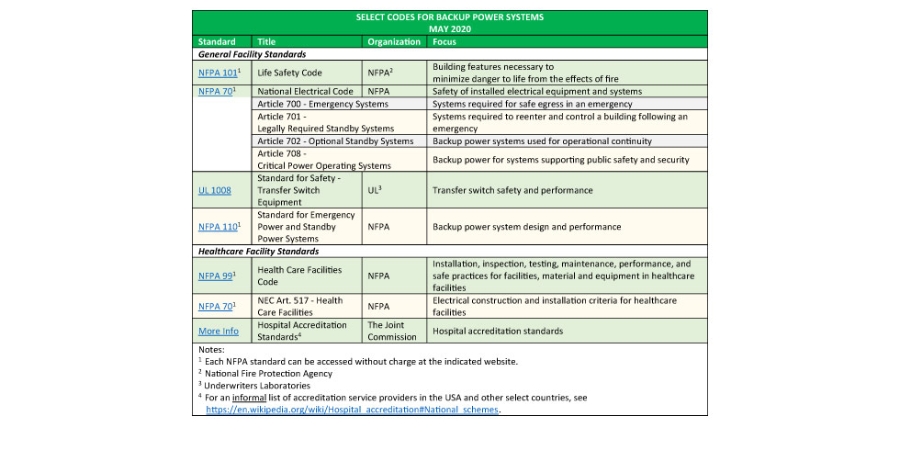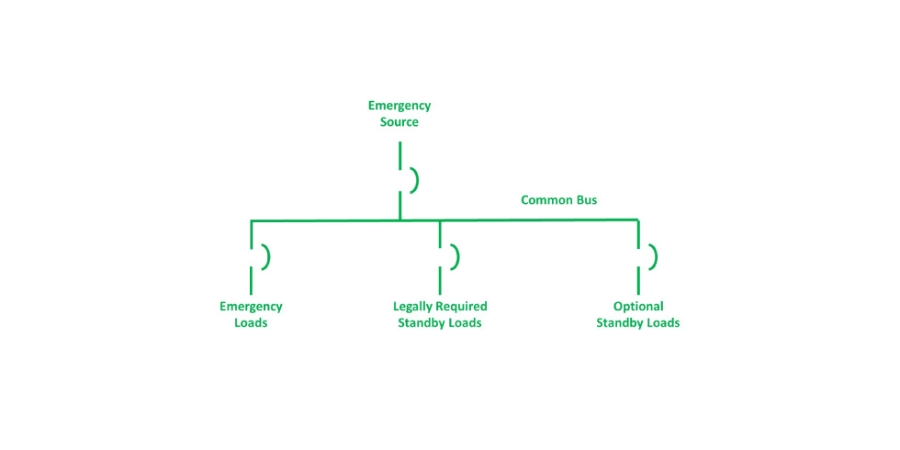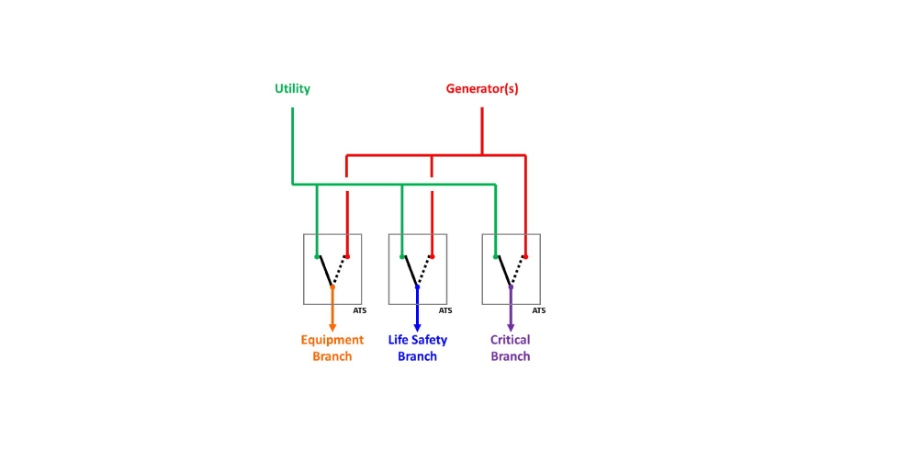In the most general of terms, Article 700 includes requirements for systems needed to get people safely out of a building in an emergency, and Article 701 includes requirements for systems needed to safely restore building function and occupancy. Article 702 specifies requirements for optional loads such as those used to maintain operational continuity.
Article 700 is the most expansive of the three articles. Requirements for emergency power systems include:
- Periodic maintenance as well as testing under load (700.3.)
- A secondary power source for use when the primary backup power source is taken offline for service (Also 700.3)
- Emergency system equipment must be suitable for the available fault current (700.4)
- Transfer equipment must be automatic, listed, and marked for emergency use (700.5)
- Backup power shall be available to emergency systems within 10 seconds of the occurrence of an outage (700.12)
Separately, Article 708 addresses backup power for
Critical Operating Power Systems. It requires an assessment of risks to reliable electrical power at certain facilities or portions thereof that supply services necessary for public safety or national security, then developing a strategy to mitigate those risks. Article 708 provisions can apply to facilities such as public emergency call centers, government buildings, key financial data centers, and facilities located along public evacuation routes. Article 708 provisions could also apply to certain hospital operations.
UL 1008 –
Standard for Safety – Transfer Switches
NEC Articles 700 and 701 require the use of listed transfer switch equipment, and UL 1008 is the primary standard by which transfer switches are listed. UL 1008 specifies safety and endurance criteria for transfer switches, which manufacturers typically verify through in-house or third-party testing. Following Underwriters Laboratories’ review of satisfactory test data, it lists the equipment for use.
UL 1008 is the standard by which switch Withstand and Closing Ratings are verified, ratings needed to specify transfer switches that can withstand available fault currents as the NEC requires. UL 1008 endurance testing is among the most stringent of available standards. For more information, review ASCO documents entitled
UL1008 Transfer Switch Withstand and Closing Ratings and
Performance Testing for Transfer Switches. For many other regions of the world, IEC 60947 - Low-Voltage Switchgear and Controlgear provides transfer switch safety and endurance criteria.
NFPA 110 –
Standard for Emergency Power and Standby Systems
NFPA 110 specifies requirements for the performance of emergency and standby power systems. It classifies these systems according to the minimum amount of time that they must be capable of providing power. It also stipulates the maximum amount of time allowed to bring secondary power online when outages occur on the primary source. Of note, Chapter 8 provides requirements for routine maintenance and operational testing. These requirements are widely referenced by other NFPA documents and other standards that apply to backup power.
HEALTHCARE FACILITY STANDARDS
NFPA 99 –
Health Care Facilities Code
The Health Care Facilities Code specifies requirements for nearly every area of medical facility operation. Topics range from infection control practices to information technology systems to medical gas management. Several articles refer to NFPA 110 to require that alternate power sources provide power within 10 seconds of the occurrence of an outage of the primary power source. If the 10-second criterium is not met during monthly tests, this capability must be confirmed annually. For more information, review the ASCO document entitled
Testing Hospital Backup Power Systems.
NFPA 70 – NEC Article 517 - Health Care Facilities
While the NEC has already been described, it’s important to note that certain of its provisions apply specifically to installation of power distribution systems in medical facilities. These systems can serve loads with particular concerns, such as procedures conducted in areas that could become wet, power where hazardous medical gases are present, and isolation of power supplied to operating rooms. Because patients can be connected to electrically powered equipment for monitoring, diagnostics, and treatment, this standard addresses grounding measures to reduce corresponding electrical hazards.
Article 517 defines and addresses Essential Electrical Systems, which are comprised of Equipment, Life Safety, and Critical Branches, each served by one or more dedicated transfer switches where continuous load exceeds 150 kVA. Article 517 also addresses how to locate important electrical equipment to reduce risk and specifies provisions for load equipment. An Essential Electrical System is shown below.





